On the Road – My Old Kentucky Home
Old Barns, Rolling Hillsides and a Few Surprises
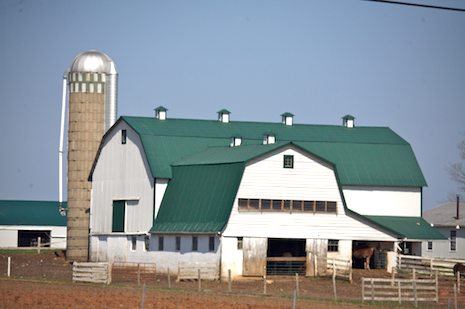
When I was a kid growing up in Cincinnati, we could look from the bluffs where the mighty Ohio River cut through across and see Kentucky on the other side. I could see the tops of the highest buildings in Covington but what enflamed my emotions was the large expanses of forest in the hills behind the town. Perhaps this is what Daniel Boone might have felt as he crested the Appalachians and looked down into the far reaches of what then was untamed wilderness.
As I left Charlestown, Missouri, I wondered what Kentucky would be like. Though I’d seen it across the Ohio from the bluff tops many times I’d never actually crossed the bridge leading there and set foot on Kentucky soil.
To get there there first order of business was to cross the Mississippi. This turned out to be somewhat anti-climatic. The steel bridge leading up over it was rather ordinary, an erector-set like combination of huge steel beams and gigantic rivets, its two lanes narrow enough that it was difficult to gather much more than a quick glance or two at the river itself.
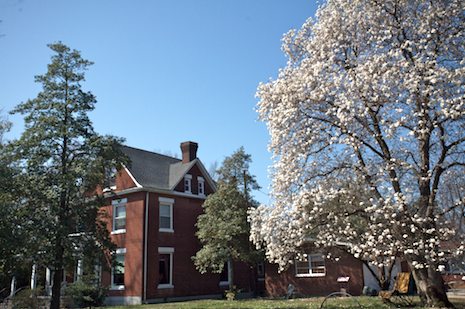
Before I knew it was was on the other side near the small town of Cairo, heading towards Poducah. leaving worries of the flooding behind. Cairo was a welcome relief to the previous day’s high water adventures. The sun was out, temperatures in the mid 60s and the rolling hillsides green and wide open. I have to admit, Kentucky is a beautiful state. Though not quite what I had imagined from those childhood memories, I had envisioned thick forests, rugged mountains, a kind of James Fenimore Cooper sort of wilderness.
My first glimpse of Kentucky was far different. As I passed through Cairo there were stately mansions, the fresh blossoms of springtime framing the large two story homes and long streets filled with tall buildings that lent a sense of a far distant past. Nothing here looked like it had been built much later than Civil War times. Crossing the Mississippi apparently hadn’t just been just crossing a river; there was a distinct feeling of having left the midwest behind and moving into the South.

Beyond Cairo I followed Highway 24 for an hour to a point where I could head off and explore more of the small towns and get a sense of the land. Kentucky has the kind of rolling countryside I’d experienced in Arkansas but to a much larger degree. Out of Ozark Mountains the western part of the state consisted almost entirely of open, rolling grasslands with just enough forest to provide the perfect backdrop.
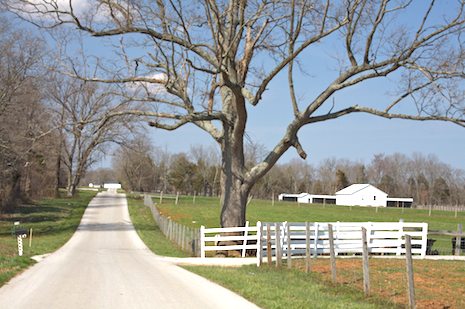
The small roads seemed almost endless and it wasn’t difficult to dip south here, cut north there and work my way through the state while at the same time moving more or less in an easterly direction. It took me two days to make it through Kentucky, far longer than I had planned but I couldn’t help it. The state is one of those that invites backcountry routes, slow cruising speeds and lots of stops.
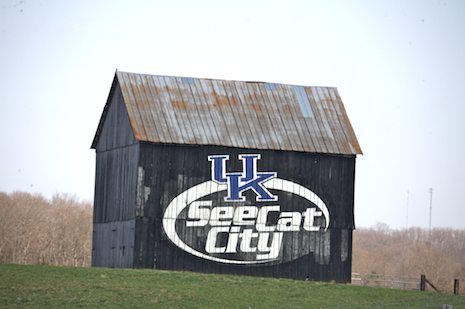
There were plenty of barns to check out, some white, some red – and a type I hadn’t seen before – the Kentucky black barns. Many of the farms seemed more like plantations with large open fields with imposing stone and brick mansions sitting out in the middle. Others were smaller and I discovered that this was also Amish country. My first sense of this came when I turned into the small town of Fairview where a monument to Jefferson Davis was located. The kids were on bikes and scooters, the boys dressed in black, all with hats on while the girls had long farm style dresses you’d be likely to see in a Laura Ingalls Wilder novel.

Turning on the tiny road they’d come from I followed it a bit, wondering if their farm might be nearby. The road was paved but narrow, barely wide enough for a single car but it would through some of the richest, most beautiful farm country I’d seen thus far. I could understand how easy it would be for a group such as the Amish to settle here and built their community.
Kentucky also has is surprises as well as its reminders. I’d turned off the main road into Fairview to see the Jefferson monument when I spotted the Amish children. I was expecting to see a small plaque or roadside structure typical of what you see most of the time when you spot those “historical monument ahead” signs along the highway.
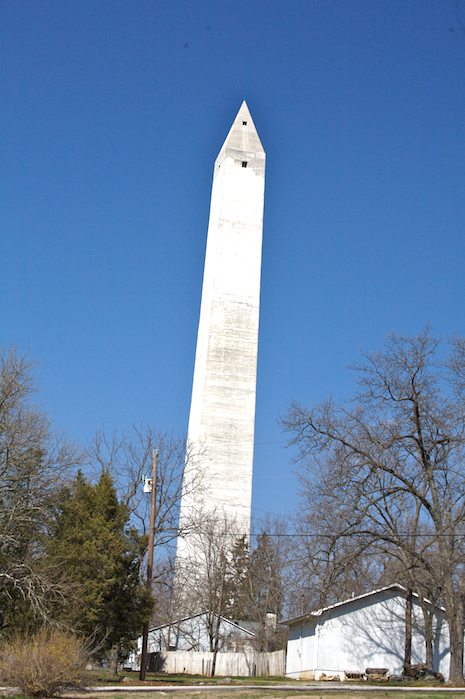
Not quite. Apparently, nothing in Kentucky is done small scale, at least not if it involves honoring one of the Confederacy’s cardinal figures. The Jefferson Monument is a type known as an obelisk – a tall, narrow, four-sided, tapering monument which ends in a pyramidal top. This one rises 351 in the air and is third in the world in height, only being surpassed by the 555-foot Washington Monument and the 570-foot San Jacinto Monument in Texas. If nothing else does, the monument firmly declares that you are in the South.
Another thirty miles down the road I came upon another piece of Kentucky history – the South Union Shaker Museum. As communities followed the frontiersmen into Kentucky, Tennessee, the interior parts of Virginia, religion was not far behind. But the type practiced on the frontier was an earthier version and my guess is that much of today’s religious fundamentalism comes from the expansion of a variety of sects such as the Shakers and Amish as well as the extension of Protestant faiths such as the Baptists and Methodists.
Over the fifty years after the American Revolution, the Shakers built 19 communal settlements that attracted some 200,000 converts over the next century. Unfortunately, the movement did not survive the 1840s. Strict believers in celibacy, they attempted to maintain their numbers through conversion and adoption of orphans. By 1822 the South Union community had closed its doors and within twenty years was almost completely gone. One of their contributions has survived however. Shaker furniture is not only popular today but originals now sell for more than $100,000.
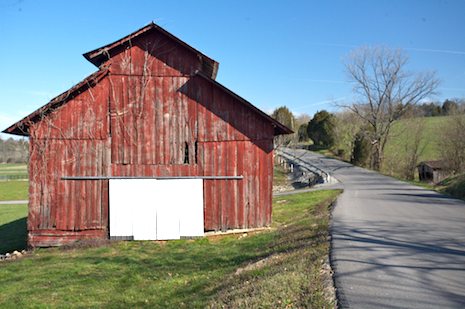
Most of what I remember about Kentucky, however, is the rolling hills and colorful barns.



